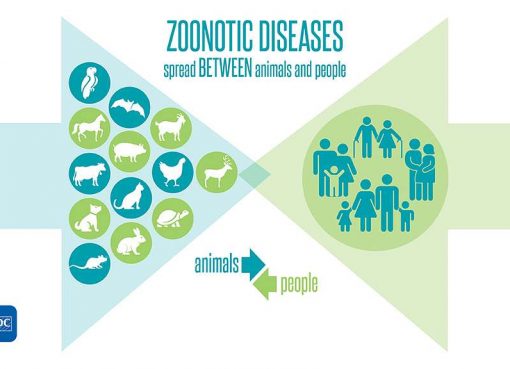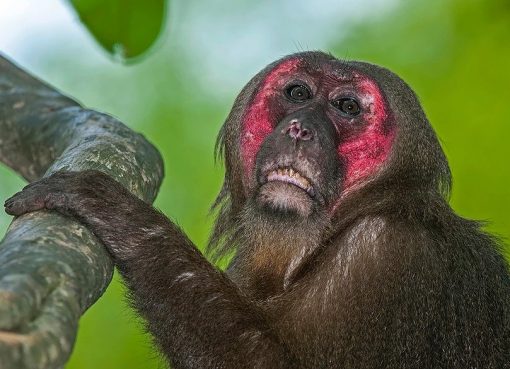Manash Jyoti Chutia1 and Masuk Raquib2
Department of Livestock Products Technology, College of Veterinary Science,
Assam Agricultural University, Khanapara, Guwahati-781022
Corresponding author email: masuk.raquib@aau.ac.in
Introduction
The dairy industry is one of the upcoming industrial sectors across the globe. The dairy industry in the present time occupies a special niche among all the other sectors as it plays a significant role in uplifting the socio-economic status of the weaker section of the society. Milk is produced on everyday basis and generates a regular income source for the numerous small and marginal producers. In the present time, people are very conscious about their health and food intake. In such a health conscious world, no other food can be healthier than milk which is referred to as a near complete food. As a result, the demand for milk and milk products has increased many folds.
The dairy industry is a very labour-intensive enterprise leading to high labour cost which has significant impact on the overall profitability. Moreover, the work load in the dairy industry is repetitive and monotonous leading to less motivation amongst the workers and the the entire production process is time-consuming and less efficient. To increase the productivity, efficiency and rapidness, new technology like Artificial Intelligence (AI) can play a significant role. The use of AI in dairy industry has a high impact on reducing the labour cost. Acemoglu and Restrepo (2017) estimated that use of one robot per thousand workers reduced the cost of wages by 0.5 per cent. Also, AI helps in meeting the demands, as it increases production efficiency by 25 per cent, reduction of the production cost by 50 per cent and an increase in utilization by more than 85 per cent.
Artificial Intelligence
Artificial intelligence (AI) has become a game changer in different sectors of the global economy and society. Starting from Apple’s Siri, Amazon’s Alexa, Google Assistant, we human beings have an easy access to a variety of AI-powered virtual assistants and thus use of AI has made our life easier.
Artificial Intelligence (AI) refers to the simulation of human intelligence in a machine that is programmed to think like human and mimic their actions. Deep learning and machine learning are the two subsets of AI that are further classified as strong AI and weak AI. Weak AI is adept at performing particular types of tasks, as for example the AI that makes Apple’s Siri virtual assistant is so good at interpreting voice commands; however, it does not enable Siri to drive a car, predict weather patterns, or analyze medical records. Strong AI, often referred to as Artificial General Intelligence (AGI), is a hypothetical type of AI that can meet or exceed human level of intelligence and apply problem-solving ability for addressing any type of problem, just as the human brain can easily learn how to drive a car, cook food and write code.
The use of AI can perhaps bring a revolution in the dairy industry starting from the dairy farms to the consumer’s plate. With use of AI technology in the dairy industry, most of the work involved in the dairy farm practices as well as in the processing industry for preparation of dairy products can be automated which may eventually save time and money.
Application of AI in the Dairy
There are a number of AI applications usable in the dairy industry that include use of robots, drones, sensor, 3D printing, virtual reality, blockchains and artificial neural networks (ANN).
Robots: Dairy industry has aimed the use of robots for various applications in order to improve the efficiency and reduce work space and to reduce the cost of production (Zongwel, 2015). Researchers have reported that the productivity in food industry can be increased by 25 per cent using robots compared to human chains. However, the use of robots in the dairy processing has limitations due to the fact that the dairy products are delicate, highly variable in shape, size and structure. As a consequence, robots are mainly confined to the end line of dairy processing, which include operations like picking, packaging and palletizing. As far as product line is concerned, robots are primarily used in cheese packaging, cheese slicing, curd slicing and portion multiplexing upto 12000 portions per hour (Kempthome, 1995; Suganya et al., 2011). Another most successful application of robot in the dairy industry includes the milking robots or automatic milking system. The cows are fitted with electronic tags that help the robots to identify the milch animals and initiate the milk process. As soon as the milking process is over, the cups disconnect automatically and the cow exits the robotic milking parlour (Higgs and Vanderslice, 1987; Butler et al., 2012). This process involves less human involvement thus curtailing labour expenses, better managemental practices and superior milk quality.
Drones: The use of drones provided better monitoring of the herd in large dairy farms. It also plays a significant role in health monitoring of the dairy cows, i.e., helps in detecting any abnormal behaviour related to lameness, illness and calving. Today, the large dairy farms have their own pastures, on which the dairy cows feed and these pasture lands can be kept in vigilance with the help of drones.
Sensors: Among all the AI technologies used, sensors are one the most advance technologies that has transformed the dairy industry. The sensors used in the dairy farms are mostly worn on the ears, neck, leg or tail. These sensors are used in health monitoring of the dairy cows (temperature check, heat detection, calving and locomotion distress). In addition, some advanced sensors have been subcutaneously implanted or administered as bolus inside the rumen to monitor rumination and detect issues related to ruminal acidosis.
Biosensors: In order to meet the strict compliance of food safety issues, there is a need to monitor food contaminants that are linked to the supply chain so that quality safe foods can be ensured to the consumers. Recently, biosensors have emerged as a promising technology for monitoring variety of contaminants namely pesticides, aflatoxin, drug residues, heavy metals and microbial pathogens in foods. Biosensors work by measuring the chemical substance which reacts with analytes and produce the signal that the transducer recognizes and converts into measurable parameter.
3D Printing: 3D printing is an innovation that promises to revolutionize dairy formulation and manufacturing processes. The majority of printing techniques require modelling software such as computer-aided design (CAD) or 3D scanning equipment to create a digital file of the 3D design (3D Systems, 2017). The 3D printing technology provides ample scope to customize the dairy products to attract consumers. It also allows the manufacturers to design and fabricate the dairy products with customized shape, colour, flavour and tailore- made nutritional needs.
Virtual Reality (VR): VR is a digital environment which can interact in a seemingly real way using electronic devices. The application of VR in the dairy industry involves navigation of the farm, manufacturing facility or distribution facility from a safer distance without interfering the farm operations. There are reports that the use of VR glasses in cows have positive impact in milk production and has attributed it to a favourable environment created, where the animals could visualize lush green pasture thus decreasing their anxiety and increasing the overall emotion of the cows.
Blockchain: Dairy supply chain in an unorganized system has serious concern over human health, environmental sustainability and welfare issues. An effective dairy supply chain system not only fulfils the information required by the consumers but also increases the trust of the consumers on the dairy products that are consumed. With the introduction of blockchain technology, the consumers can now connect all the aspects of the supply chain starting from the farm to the fork. It helps in traceability of the products, food safety issues and transparency, and thus increases the trust of the consumers towards the dairy industry.
Artificial Neural Network (ANN): The Artificial Neural Network has been designed to simulate the way a human brain analyses data and processes it. Similar to the human brain that has neurons interconnected to one-another, artificial neural networks also have neurons that are interconnected to one-another in various layers of a computing system. The shelf life prediction of dairy products in the laboratory is a very cumbersome, expensive and time-consuming process and ANN has been proved to be an useful tool for obtaining the desired output including the analyses and shelf life prediction in case of dairy products at a rapid, reliable and faster rate which has become beneficial for the dairy industry, consumers, wholesalers, retailers, regulatory agencies, food researchers as well as academicians. The wide range of application of ANN in dairy industry includes prediction of shelf life of dairy products (yoghurt, processed cheese, kalakand, burfi, etc), to control the expiration date of yoghurt, for authenticity of low-fat yogurts and determination of protein content in yoghurt, determination of nutritional parameters in chocolate, investigation of seasonal variation in fatty acid composition of butter and rheological characteristics of Swiss cheese.
Conclusion
The introduction of newer digital technologies such as robots, drones, sensors, 3D printing, virtual reality, blockchains and artificial neural networks will greatly aid in increasing the efficiencies and help the dairy industry to rise and meet the demands of the global population. With the application of AI technology in the dairy industry, it will revolutionize the whole dairy sector in the days to come.
References
3D Systems, 2017. Sense Scanner. (https://www.3dsystems.com/3d-scanners/sensescanner).
Acemoglu, D. and Restrepo, P. (2017). Robots and jobs: Evidence from the US. NBER Working Paper No. 23285.
Butler, D., Holloway, L. and Bear, C. (2012). The impact of technological change in dairy farming: robotic milking systems and the changing role of the stockperson. J. Royal Agric. Soc. Eng., 173: 1-6.
Higgs, D.J. and Vanderslice, J.T. (1987) . Application and flexibility of robotics in automating extraction methods for food samples. J. Chromatogr. Sci., 25: 187-191.
Kempthome, H. (1995). Robotic processing of carcasses. Food Techno. New Zealand, 12-14.
Suganya P., Ramani S., Mathew A.L. and Elias S. (2011). Robotics in food processing, beverage and food world. pp.-62-65.
Zongwei, L. (2015). Robotics, automation, and control in industrial and service settings.
Hershey, PA, USA: IGI Global.




